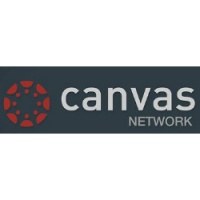
I’ve been asked lately by some teachers to share with them a list of platforms that offer MOOCs. It is great to see that teachers are gaining interest and realizing that learning is a lifelong process that, with the help of technology, can happened anytime, anywhere. Some of the MOOCs I list below are offered by outstanding universities around the globe, other ,however, are not well known, but are worth the look.
- Coursera is the top MOOC platform offering hundreds of courses from top universities in the world. Courses encompass everything you can think of. However, teachers and educators might be interested in these courses. A typical course would include : short video lectures, discussion forums, weekly assignments and deadlines, and a final test. The courses vary in duration and requirements depending on the course type and the university offering it. Some courses that I have undertaken were outstanding, others however were a not so worth the effort and time, and I had to drop out because of the boring online lectures.
- Edx is another MOOC platform offered by Harvard, MIT and University of California Berkley, among others. Courses are worth taking as they are offered by Ivy league universities. However, the courses are limited in scope, mainly focusing on computer science, electronics, and sciences.
- Novoed MOOC platform is offered by Stanford university. The courses are great. I have taken two courses myself “Designing a New learning Environment” and “ A Crash Course on Creativity”. The course on Designing a new Learning Environment was outstanding as it followed a PBL approach and we had to assemble a team for the final project assignment. Novoed however is mainly geared towards Entrepreneurship and technology courses.
- Canvas.net is another MOOC platform with courses offered by great universities. I have taken a course “Learning Analytics” offered by George Siemens, the professor who offered the first MOOC in the world. His approach was a connectivist approach, dispersing knowledge among many social media platforms.
- Udemy is an other interesting MOOC platform ;however, many of its courses have a low fee. The courses are offered by either university professors or professionals.
- Future Learn is UK’s earnest endeavor in entering MOOCs domain dominated by US terrain.
- Openlearn is offered by Open University
- Alison Courses is yet another not well known MOOC.Initiated in Ireland, this MOOC platform offers many online courses for free mainly for soft skills. All courses are for free, but if you wish to take out the ads you need to pay a small fee. There is also a group management account if you are intending to give courses to your employees or students so that you are able to manage their accounts and track their progress.
- Openlearning is great MOOC platform that connects teachers with students. Courses can be taught for free or can have a little as 10$ fee for every student. Courses are very varied but still limited in scope. Openlearning has a great potential but still is fledgling.
- DS106 Do you love digital storytelling? Do you want to know how to use it in real life and in the classroom? Then this unconventional MOOC might be worth the look.
Digital Storytelling (also affectionately known as ds106) is an open, online course that happens at various times throughout the year at the University of Mary Washington… but you can join in whenever you like and leave whenever you need. This course is free to anyone who wants to take it, and the only requirements are a real computer, a hardy internet connection, preferably a domain of your own and some commodity web hosting, and all the creativity you can muster.










Comments
Post a Comment